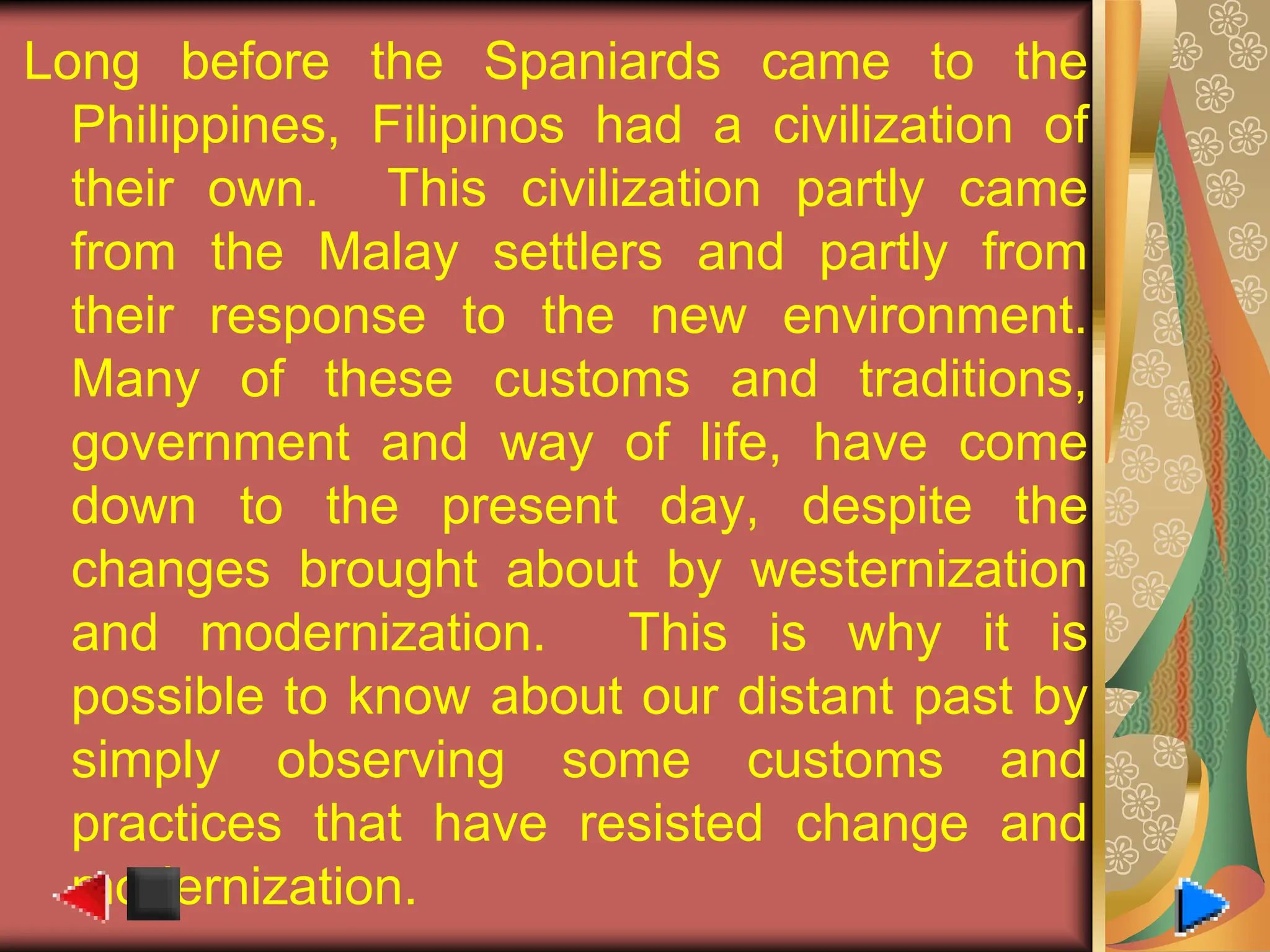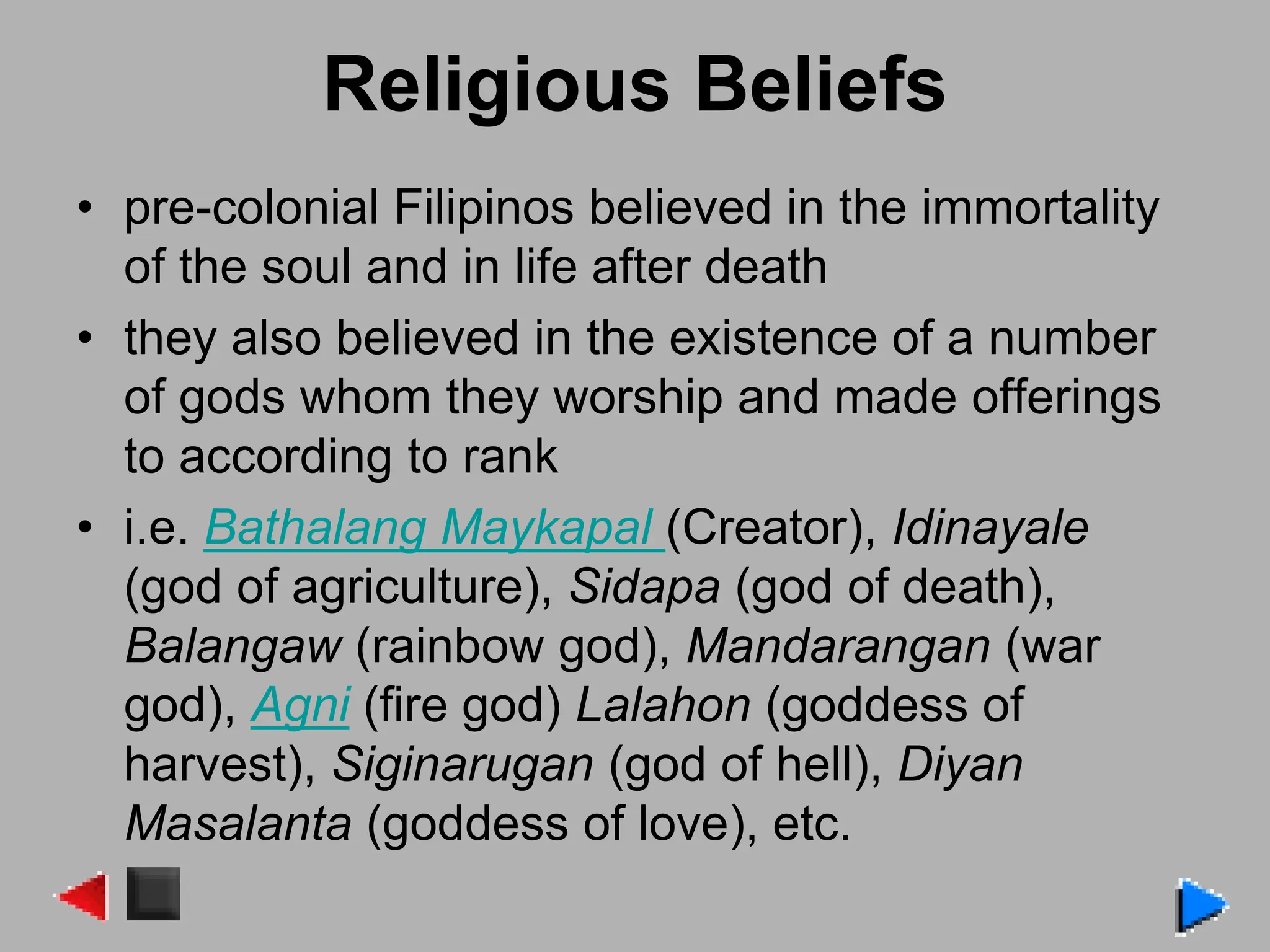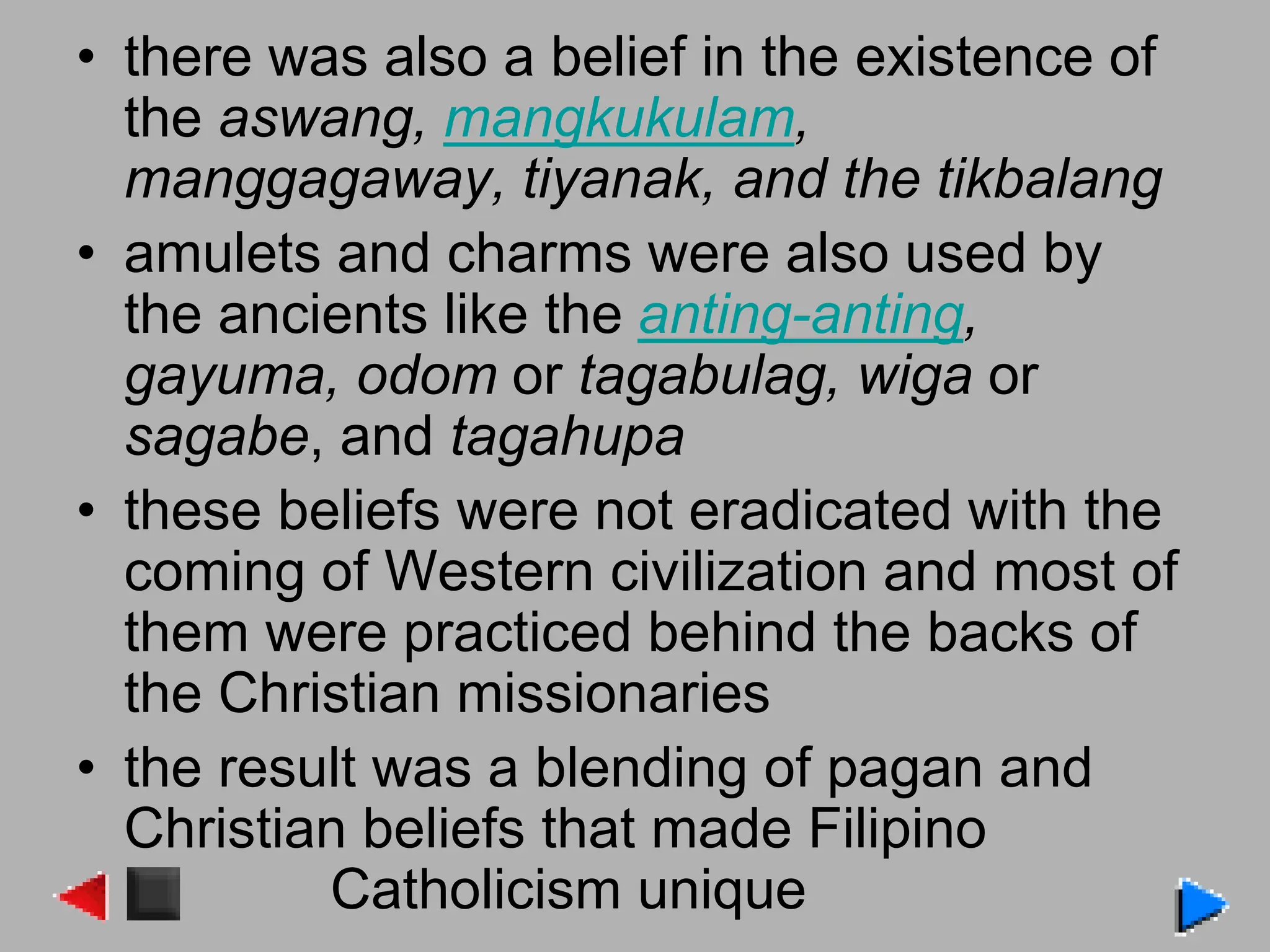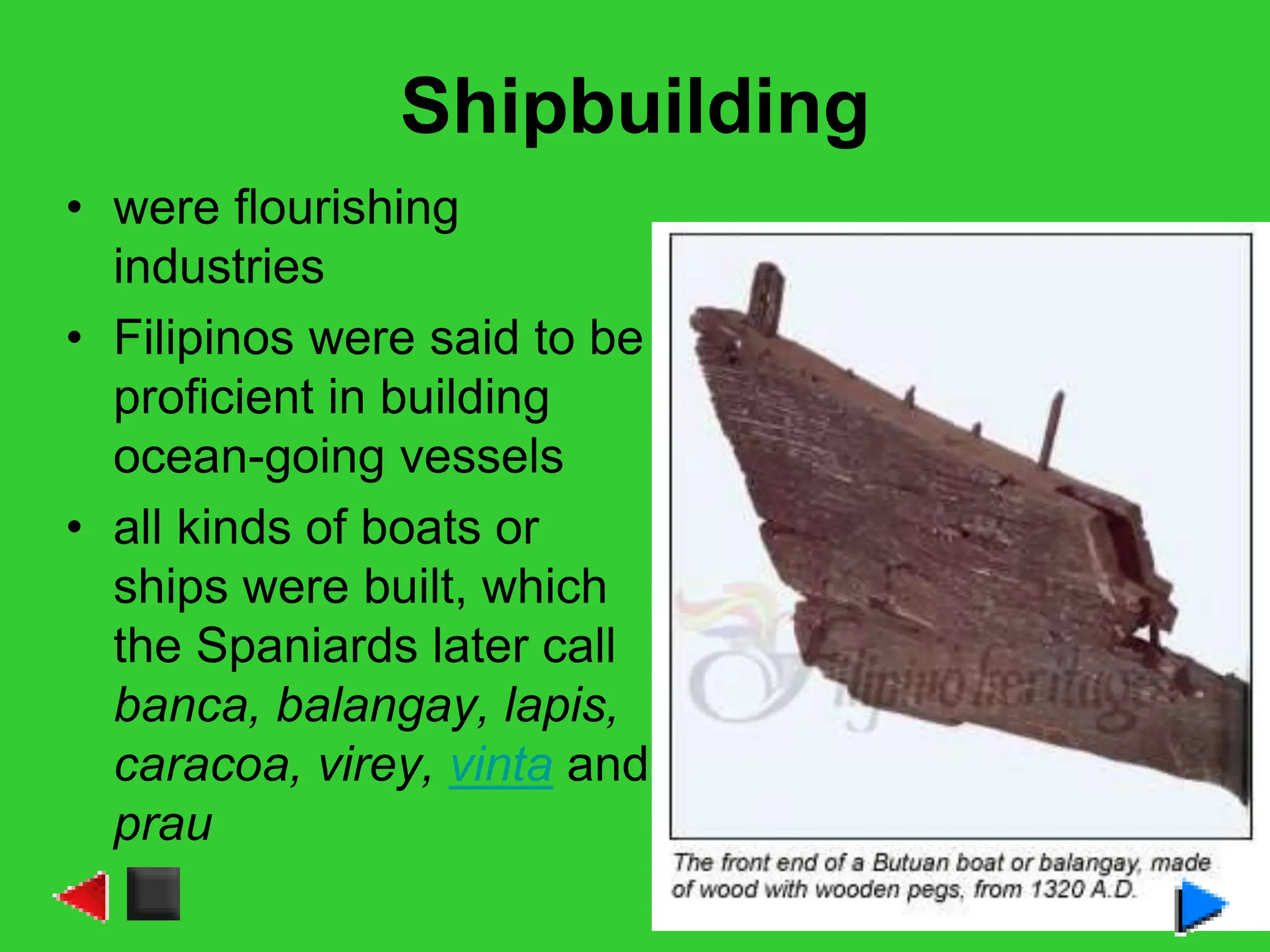Pre-colonial Philippine society was organized around autonomous barangays led by datus. The population consisted of nobles, freemen, and dependents. The economy centered around agriculture, fishing, mining, shipbuilding, weaving and local trade. Religion involved animistic beliefs and the worship of various gods and spirits, with rituals led by babaylans. Marriage customs included courtship periods, dowries, and festivities. Houses were built to suit the tropical climate. Status was indicated by clothing and ornaments.















































